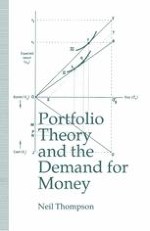1993 | OriginalPaper | Chapter
Disequilibrium Money and Buffer Stock Models
Author : Neil Thompson
Published in: Portfolio Theory and the Demand for Money
Publisher: Palgrave Macmillan UK
Included in: Professional Book Archive
Activate our intelligent search to find suitable subject content or patents.
Select sections of text to find matching patents with Artificial Intelligence. powered by
Select sections of text to find additional relevant content using AI-assisted search. powered by
An alternative approach to the modelling of monetary aggregates is that based upon the notion of ‘disequilibrium money’. Artis and Lewis (1974, 1976) were the first to formulate such a concept, in their attempt to explain the breakdown in the UK money demand function in the 1970s. In the traditional approach to estimating money demand equations, it is implicitly assumed that the actual money supply is always equal to the aggregate short-run demand, so that the money market is continually in equilibrium. Such an assumption is uncontroversial when the money stock is demand determined, as is generally assumed to have been the case in the UK in the 1950s and 1960s. However, the assumption appears to be a less applicable characterisation of the UK money market after 1970, particularly for broad money. Artis and Lewis argue that large independent changes in the UK money supply, in the early 1970s, led to a disequilibrium in the money market in which supply exceeded demand. This expansion in the money stock occurred for a number of reasons. An important factor was the Competition and Credit Control reforms, which created a new spirit of competition in the banking system and abolished the direct controls on bank advances. In addition, budget deficits incurred by the government in the early 1970s were largely financed by money creation.
